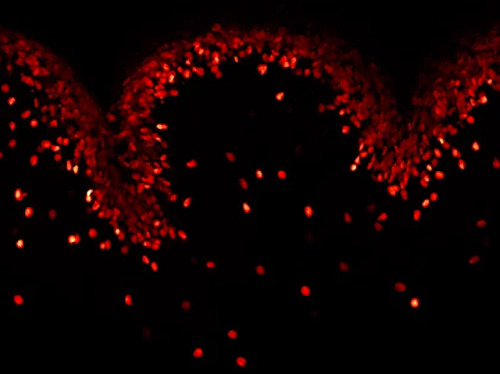
Moulding the Folding
If I handed you a napkin beautifully folded into the shape of a swan, would you know how it was made? That’s the challenge facing researchers trying to understand how the infinitely complex folds of the human brain take shape during development. Various competing theories explain their origin. Do outer cells pull in different directions, or do uneven growth speeds cause the bulges? Errors in the folding process can lead to serious illnesses, so understanding the mechanism could have real impacts. To investigate, researchers looked to the mouse cerebellum – a small part of the brain, and a simpler prospect to interrogate. They found that during the first stages of folding, cells in the outer layer (pictured) grow uniformly and faster than inner cells, and with fluid-like flexibility. By revealing this and a previously unknown combination of forces, such as surrounding tensions restricting growth, the researchers are helping unfold the mystery.
Written by Anthony Lewis
- Image from work by Andrew K Lawton and colleagues
- Developmental Biology Program, Sloan Kettering Institute, New York, NY, USA
- Image originally published under a Creative Commons Licence (BY 4.0)
- Research published in eLife, April 2019
You can also follow BPoD on Instagram, Twitter and Facebook
Archive link




Комментариев нет:
Отправить комментарий